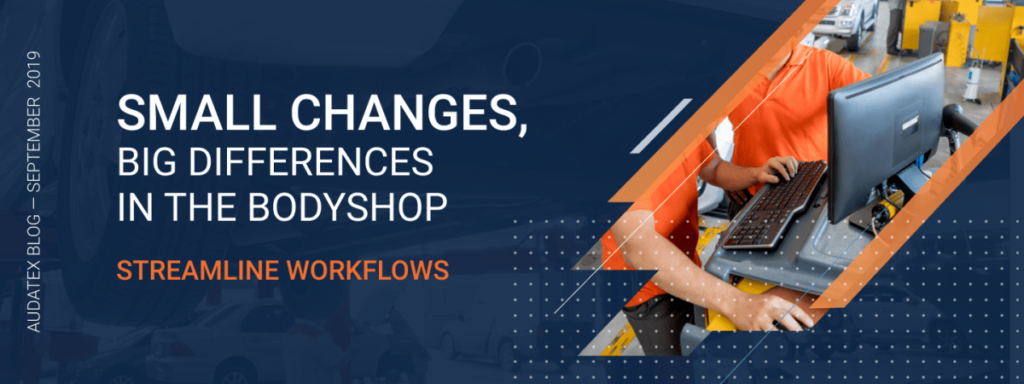Small Changes, Big Differences in the Bodyshop: Adapt your Workstreams

In September we launched our eBook, Small Changes, Big Differences in the Bodyshop, looking at how marginal gains can improve the bottom line of modern vehicle repair businesses. This sixth blog in our ‘small changes’ series discusses how bodyshops can evaluate the different ways that work comes in, and what improvements can be made to this process.
With so many factors to account for, there truly is no one-size-fits-all formula for longstanding success in the vehicle repair sector. That said, all owners will share the same desire to maximise the amount of work entering their bodyshop and future proof their sources of work to stay competitive.
Are you relying too heavily on one work provider, for example? A small change in your outlook on workstreams and gradually exploring other potential sales opportunities may well be the change that opens doors to a more consistent flow of repair work, both now and in the future.
Start small by evaluating the mix of work currently entering your bodyshop. What other ways can you bring work into the shop? For example, your VDAs could use their role to assess whether any additional service and maintenance work could be upsold to customers already using the bodyshop for repairs to their vehicle. Setting incremental targets for the number of hours worked on retail jobs per week can provide you with a benchmark on which to keep building.
When compared to the level of work completed through insurer contracts, many bodyshops fail to acknowledge the potential of customer walk-ins. More often than not, this is down to potential customers simply not knowing your brand and the services you offer. Taking small steps to market your business, through channels such as social media or advertising, can increase your profile locally and broaden your customer base – even generating referrals to bolster your in-bound workstream over time.
This selective approach to repair work does not only apply to the work you source independently; it is also about the work that you actively decline. Having avoidance programmes in place, whether technology-based or otherwise, can help to vet all potential work and prevent any total loss vehicles from entering the bodyshop’s workload and causing an immediate loss in profits.
Striking the correct balance of work which can utilise your staff and equipment in the most effective way will result in reduced repair lifecycles and increasing profit margins. While you are unlikely to see dramatic changes overnight, a more varied approach to the way that your bodyshop sources its work could be the key to sustaining profit and growth as the sector enters the next phase of its evolution.
To read more, download the full eBook here: https://www.audatex.co.uk/news/small-changes